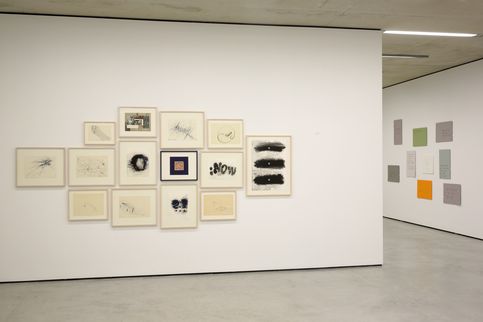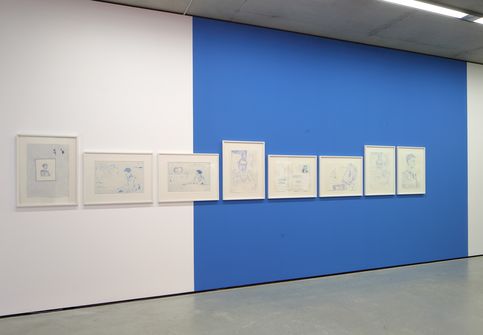Power of Language
From the Collections
Curators: Antonia Lotz, Curator, Generali Foundation Collection with Marijana Schneider, Curatorial Assistant, Museum der Moderne Salzburg
Venue: Museum der Moderne Salzburg, Mönchsberg
The second exhibition of art from the collections celebrating the Generali Foundation’s anniversary was dedicated to the creative engagement with language.
It was the tenth in a series of thematically focused presentations showcasing works from the holdings of the Museum der Moderne Salzburg and several collections entrusted to its care, including the Austrian Federal Photography Collection and the Generali Foundation Collection. In this era of “alternative facts” and “fake news,” it brought artists’ reflections on the power of language into focus.
The dialogue between image and text has become closer since the early twentieth century, but it has also undergone qualitative changes: language has become an integral part of visual art on the levels of form and content. Words, fragments of words, and entire texts appear in pictures and collages. In concrete poetry, a tendency that has its heyday in the 1950s, language is treated as a kind of physical material; during the next two decades, conceptual art, in works that instantiate ideas, relies on language as the central medium of creative articulation. The exhibition presented numerous works by international artists of the period, juxtaposing them with more recent installations, sculptures, and pictures that probe the entanglements between language and institutional critique, discrimination, or gender issues.
Language shapes how humans think and act. Words can be subtle manipulators; metaphors can change the outcome of elections. The power exerted by the languages of media and politics is evident in the propaganda in countries ruled by dictators, but also in how it influences the idiom of everyday life. At a time when lies are labeled “alternative facts” and people dismiss reporting that contradict their worldviews as “fake news,” the exhibition surveyed the representation and use of letters, words, and phrases in works in the collections at the museum dating from between the early nineteenth century and the present. The artists engaged with language in a variety of ways, with approaches ranging from critical and formal to poetic and playful.
Artists: Christian Ludwig Attersee, Robert Barry, Josef Bauer, Lothar Baumgarten, Konrad Bayer, Marcel Broodthaers, Günter Brus, Theresa Hak Kyung Cha, Lovis Corinth, Verena Dengler, Peter Downsbrough, Heinrich Dunst, VALIE EXPORT, Rainer Ganahl, Heinz Gappmayr, Francisco de Goya, Jarosław Kozłowski, David Lamelas, Else Lasker-Schüler, Stéphane Mallarmé, Wendelien van Oldenborgh, Ewa Partum, Arnulf Rainer, Gerhard Rühm, Ashley Hans Scheirl, Klaus Scherübel, Ferdinand Schmatz, Kurt Schwitters, Dominik Steiger, Andrea van der Straeten, Richard Teschner, Ana Torfs, Goran Trbuljak, Joëlle Tuerlinckx, Timm Ulrichs, Ian Wallace, Oswald Wiener, Heimo Zobernig






